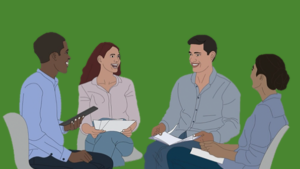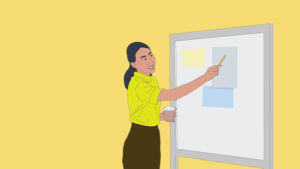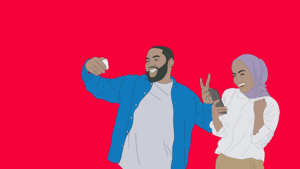
How to design the best service design team for digital public services
When people talk about service design there is a tendency to talk about processes, systems and tools. Of course these things are important. But to really make service design work, you need two things that are more critical. You need the right service design team with a mix of skills – designers, developers, technical architects, product managers and user researchers. You also need a collaborative culture that knits all those people together.
This is not just a challenge for digital service design consultancies. It is one that many government departments face when they look to expand their teams and keep everyone on the same page.
In this post, I will share an approach you can use to design and grow a service design team that delivers successful digital public services and informs government policy.
5 steps to creating a high-performing service design team
1. Before you do anything – pause
First, resist the pressure to grow your team immediately. Don’t rush into costly hiring, because you will lock in people and skills you might not need. Sometimes no hire is better than a bad or rushed hire. There is a cost when you bring a team together and you want to make that investment at the right time. It’s also irresponsible to change the makeup of your team through new blood without fixing any problems that already exist.
2. Evaluate your service design team’s skills and strengths
Begin instead by taking the time to get to know the strengths, challenges, passions and weaknesses of your team that’s already in situ.
I use a management tool for this called Rock Tree Heart Star. It’s based around four simple question areas that run like this:
- Rock − what is your foundation, what is the one solid area of your work that you can do with your eyes closed?
- Tree – where are you going, how do you want to develop?
- Heart − what do you absolutely love to do, what is the passion that drives you to do this job?
- Star − what do you do better than anyone else in the team, maybe even the organisation? What are you absolutely unstoppable at, and what sets you apart from everyone you’ve ever known in your field?
Rock Tree Heart Star is an exceptionally effective way to get to know your team faster. Use it to understand what your team can already bring to your projects. It will trim that ‘getting to know you’ process by months. It will also help you identify where people are most likely to develop in creative, even surprising ways that deliver better outcomes and more diverse thinking.
READ: When is the right time to do service design?
3. Map the skills you need once you understand the skills you have
After using Rock Tree Heart Star you have a matrix of skills, development opportunities and a deep insight into your team’s capabilities. It’s incredibly useful when you think about which people to put on projects. You can base your decisions on solid knowledge of their strengths and ambitions. It’s also a good way to identify where it might be beneficial to pair up people on projects with different skills and outlooks, have them learn from each other, and deliver a more creative solution to the problem at hand.
Just as importantly, it helps you to identify where you need to recruit in what I call an ‘entrepreneurial’ way to boost skills and fill gaps. This will help you increase diversity of thinking when you do decide to expand your team.
4. Increase cognitive diversity through talent based recruitment
Talent based recruitment is an entrepreneurial (i.e. risk-embracing) way to recruit for new ways of thinking that solve problems in innovative ways. To achieve this goal you need to make sure more people can progress through the recruitment process. That means seeking neurodiversity.
To do this, there’s a few approaches you should avoid:
- Psychometric tests – people with ADHD or anxiety who otherwise have a lot to offer don’t perform well in that kind of scenario. Neither do people with dyslexia, who are often very good at visualising connections between systems in ways that other people can’t.
- Tick box exercises based on experience or qualifications – these often see design teams recruit people in their own image.
- Quotas – it’s more effective to adopt a recruitment method that embraces people from different backgrounds that can offer many transferable skills. For example, someone who studied anthropology could be an amazing user researcher.
It’s important to assess people only on talent, aptitude and whether they would bring a new way of thinking to your approach. This will help achieve successful outcomes in the design of digital public services that meet the needs of all parts of the community. All other recruitment considerations and dimensions should be secondary.

5. Build a culture of cohesion and community
When you do scale your service design team, you also need to work out how to create a performance culture that binds it together. The best way to do this is to build your approach around the concept of psychological safety.
Teams of people with diverse backgrounds are more effective at coming up with creative solutions than groups with similar life experiences. But what if some of your team members don’t feel comfortable enough to speak up or challenge the status quo? What if they’re afraid to share ideas for fear of rejection? If that happens the value of what you’re trying to build will be lost.
Strive instead to create an environment of psychological safety where people don’t fear asking for help or putting forward challenging ideas. There are many ways you can do this. Make your openness to new ideas explicit. Ask open-ended questions. Encourage ideas that aren’t yet fully formed. Think also about creating monthly, maybe even weekly design team sessions that are a forum for experimentation and iteration. The idea is to test yourself, to test each other, in an open spirit of collaboration, to see how good you can be.
Get this right and you will create a high-performance culture that retains the best talent, unlocks the benefits of diversity and delivers the most innovative solutions to problems.
The benefits of a high-achieving service design team
The benefits of this approach to building a service design team are many and varied. You will develop internal talent mobility and open up the opportunity for people to work on areas they are passionate about. You will get a fresh perspective on projects. Most importantly, you will find your team challenges you as a leader about what you could do differently. That, ultimately, is what will help you design a service design team that is set up for sustainable, long term success.
If you’d like to find out more, or are interested in working for our team, please get in touch.
-

Zaizi talent shines at Computing DevOps Excellence Awards 2025
-

How Zaizi’s user-centred approach won the trust of border officers
-

Does the state need to be more like a start up?
-

My first Regional Scrum Gathering in Stockholm – key takeaways
-

Transformation Day – How do you fit a square peg in a round hole?
-

Zaizi named in several Most Loved Workplaces® lists for 2024
